Archaeology & History
5 Facts About the Ancient Roman Necropolis That Borders the Vatican, Now Open to the Public
The site was previously only accessible to scholars and specialists.
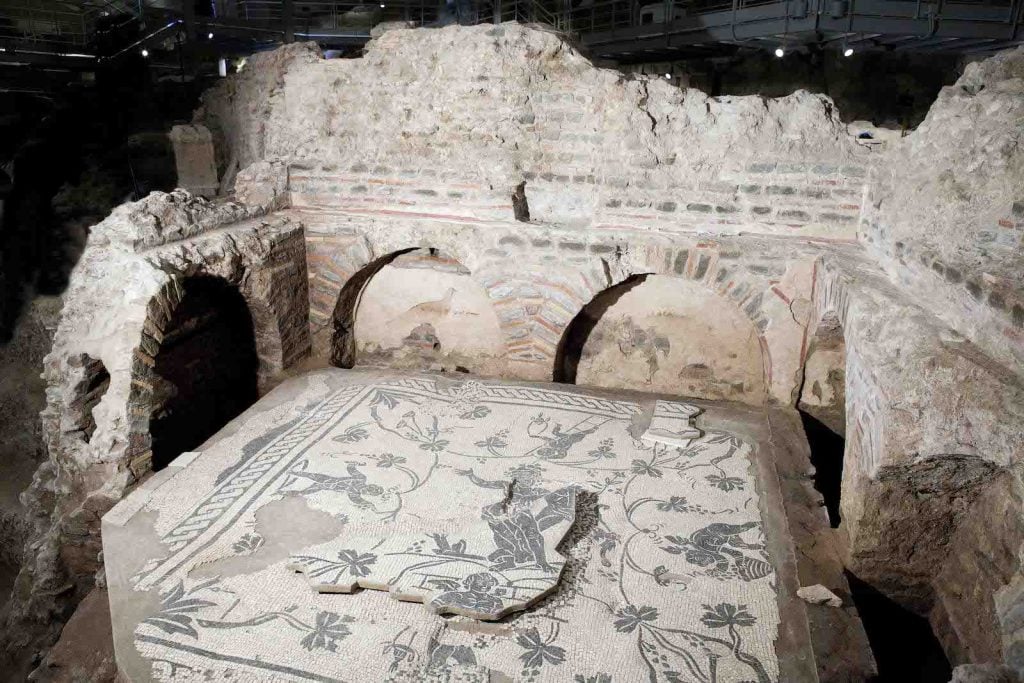
The site was previously only accessible to scholars and specialists.

Artnet News

The Vatican Museums has newly opened to the public an ancient necropolis stocked with carved marble sarcophagi and bone-filled open graves of everyday ancient Romans.
The word necropolis comes from the Greek expression for “city of the dead.” These “cities” grew up alongside roads outside the urban center due to laws forbidding cremation and burial of the dead inside city limits. Funerary practices and rites are preserved especially clearly in the necropolis that extends along the Via Triumphalis (a Roman road now known as the Via Trionfale), with burial sites accompanied by eye-popping Roman frescoes and mosaics.
Previously, the necropolis was accessible only to certain groups of scholars and specialists. It is now open to the public via the new Saint Rose Gate entrance, inaugurated with the exhibition “Life and Death in the Rome of the Caesars.”
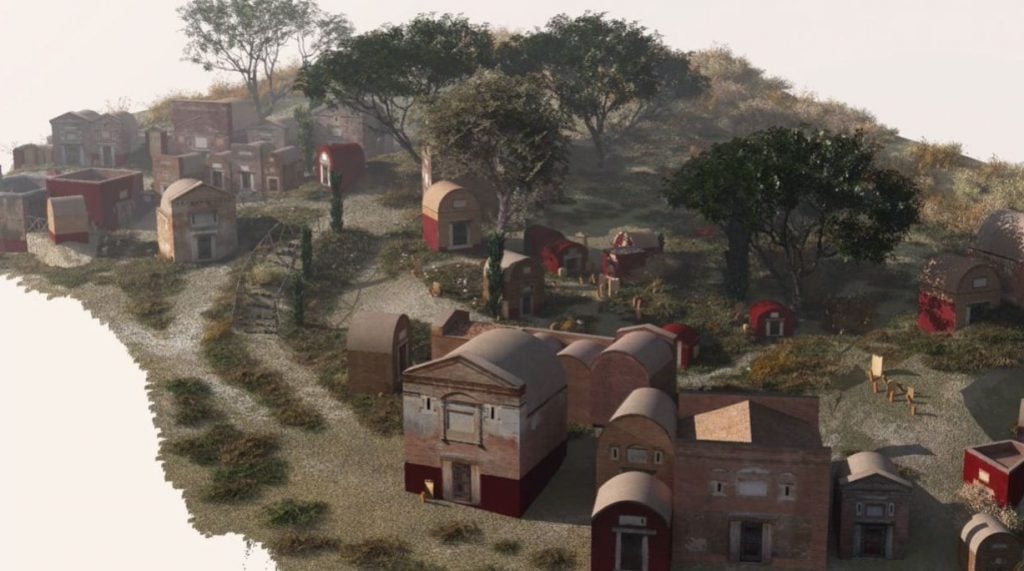
A virtual reconstruction of the Via Triumphalis necropolis. Courtesy the Vatican Museums.
It extends nearly 11,000 square feet. The size of the necropolis is not as extensive as some other Roman burial sites, but its importance lies in its proximity to one of the most significant religious sites in Christianity.
According to archaeologists, no less than the tomb of St. Peter himself is located in the Vatican Necropolis.
But in general, “Here, we have represented the lower middle class of Rome’s population,” said Leonardo Di Blasi, an archaeologist with the Vatican Museums, in a video on Euro News. “They are essentially slaves, freedmen, artisans of the city of Rome.” Some were the property of the emperor, and are indicated to have been the “servant of Nero.”
One of them was a man named Alcimus, who was the set director for the downtown Theater of Pompeii, the most important theater of the period. Another was a horse trainer who worked at the chariot races.
One young boy is interred there, according to the Catholic News Service, marked by a sculpture of a boy’s head accompanied by an inscription reading “Vixit Anni IIII Menses IIII Dies X,” Latin for “He lived four years, four months, and 10 days.”
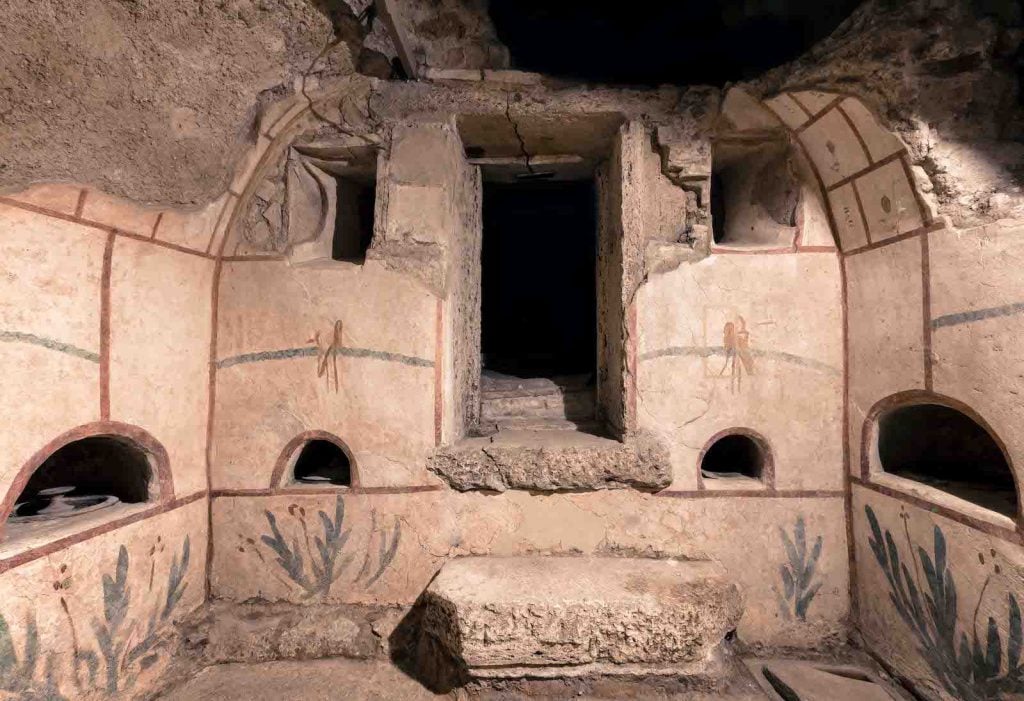
The Via Triumphalis necropolis. Courtesy the Vatican Museums.
The Vatican burial grounds were first explored in the 1940s at the request of then Pope Pius X, who wanted to be buried near the grave of Peter the Apostle. The dig revealed numerous mausoleums and tombs.
The newest part of the burial ground was revealed through an infrastructure project in 2003, as the Vatican excavated for a new multilevel employee parking garage.
The department of the Vatican that was overseeing construction of the parking garage, intent on meeting its deadline, was accused of trying to conceal the find, Giandomenico Spinola, an archaeologist and deputy artistic-scientific director of the museums, told the Catholic News Service. It was only when journalists publicized the discovery that he and his colleagues were invited in to advise.
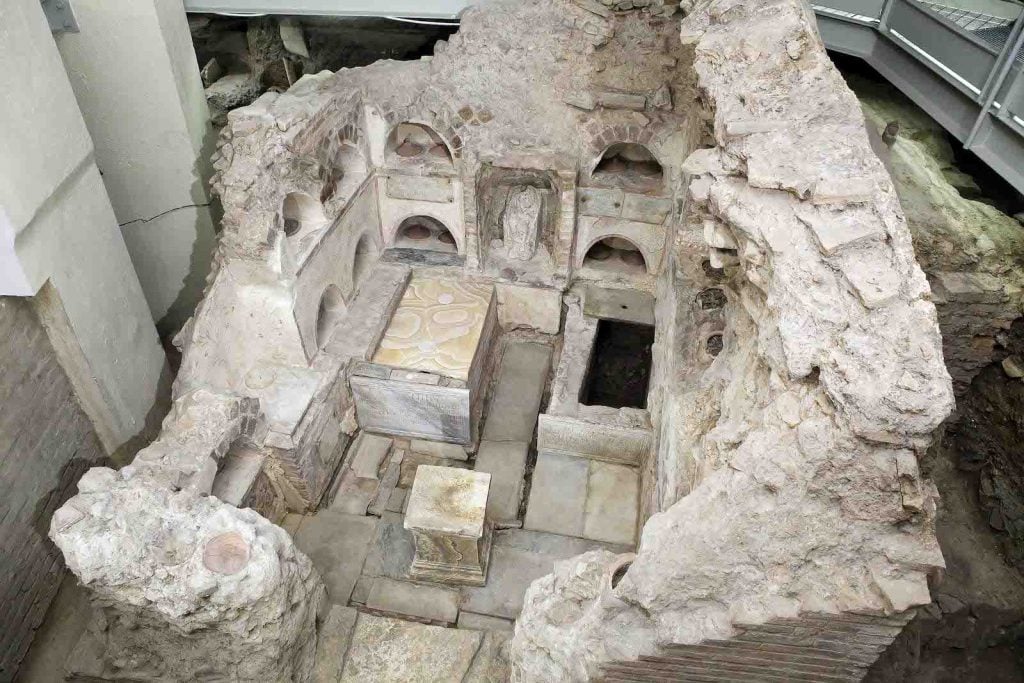
The Via Triumphalis necropolis. Courtesy the Vatican Museums.
Bodies were interred in this burial ground between the first century B.C.E and the fourth century C.E., and organic remains have vanished. A number of the graves, including their tombs and decorations, including frescoes, mosaic floors, and marble-carved inscriptions, were fortuitously preserved by a series of mudslides in the area.
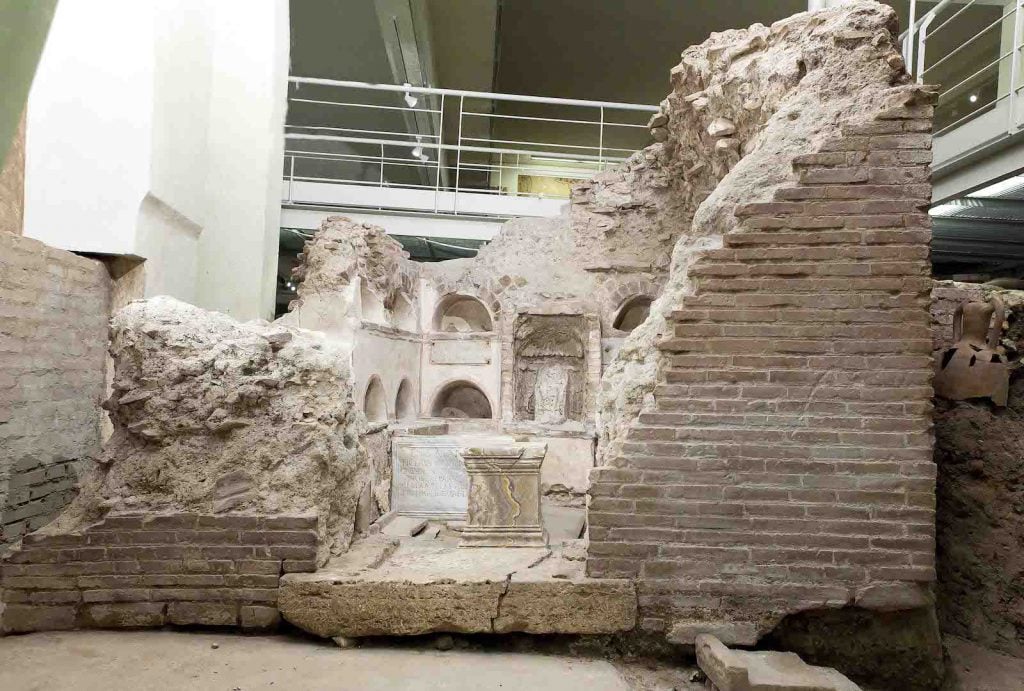
The Via Triumphalis necropolis. Courtesy the Vatican Museums.
More Trending Stories:
A Shipwreck Off the Coast of Colombia May Hold $20 Billion Worth of Treasure
Hot! How a Backyard Photographer Captured Some of the Most Detailed Images of the Sun
Chinese Artist Chen Ke Celebrates the Women of Bauhaus in a Colorful, Mixed-Media Paris Debut
A Centuries-Spanning Exhibition Investigates the Age-Old Lure of Money
Meet the Woman Behind ‘Weird Medieval Guys,’ the Internet Hit Mining Odd Art From the Middle Ages
Conservators Find a ‘Monstrous Figure’ Hidden in an 18th-Century Joshua Reynolds Painting
A First-Class Dinner Menu Salvaged From the Titanic Makes Waves at Auction
The Louvre Seeks Donations to Stop an American Museum From Acquiring a French Masterpiece